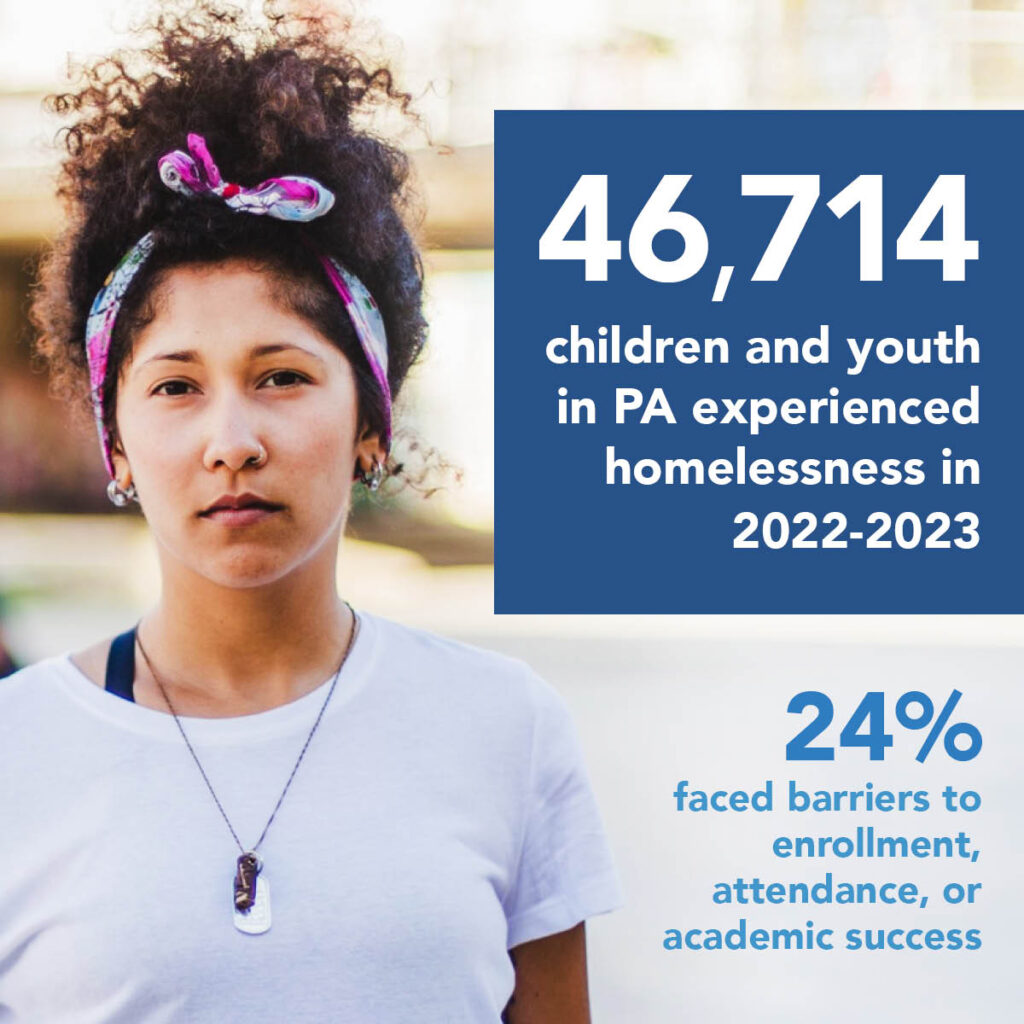#ProtectPAKids: Child Homelessness in Pennsylvania

Jack Veal was only 14 when he appeared as “Loki” on Disney+. A few years later, he would find himself homeless on the streets on London after escaping from a physically and emotionally abusive household.
“Hi. I’m a famous actor, I’m 17 and I’m homeless,” Veal said in one TikTok. Sadly, his story is not unique. Child homelessness is a pressing issue, especially in Pennsylvania where it affects thousands of children and their families. Understanding the scope of the problem, its impacts, and recognizing the signs can empower teachers, parents, and community members to provide effective support.
As PFSA President and CEO Angela Liddle noted in a PennLive opinion column last month, the Pennsylvania Department of Education reported 46,714 children and youth experiencing homelessness in the commonwealth from 2022 to 2023. They made up approximately 2.4% of the state’s public school population, with 24% of enrolled students experiencing barriers to enrollment, attendance, or academic success.
How homelessness impacts children and youth
Homelessness can turn a child’s world upside down, affecting their education, health, and future:
- Educational disruption: Homeless children are 87% more likely to drop out of school and three times more likely to be placed in special education programs.
- Emotional and behavioral challenges: The instability associated with homelessness often leads to increased anxiety, depression, and behavioral issues, affecting social interactions and mental health.
- Health concerns: Lack of stable housing can result in poor nutrition, limited access to health care, and increased exposure to environmental hazards which can negatively compromise physical health.
Signs of child homelessness
- Frequent absences or tardiness: Unstable living situations can make consistent school attendance challenging.
- Poor hygiene and inadequate clothing: Limited access to facilities may result in unwashed clothing or inappropriate attire for the weather.
- Hunger and fatigue: Homeless children may come to school hungry or tired, affecting their concentration and participation.
- Social withdrawal or aggressive behavior: Emotional stress can manifest as withdrawal from peers or unexpected aggression.
How teachers and other adults can help
- Create a supportive environment: Foster an inclusive classroom where all students feel safe and valued. Be sensitive to the unique challenges faced by homeless children.
- Collaborate with school resources: Work with school counselors, social workers, and homeless liaisons to connect families with necessary services and support.
- Provide academic assistance: Offer additional help with schoolwork, understanding that homeless children may lack a conducive environment for studying at home.
- Ensure basic needs are met: Keep snacks, hygiene products, and spare clothing available for students in need. Discreetly provide these items to maintain the child’s dignity.
- Advocate for awareness and resources: Raise awareness about child homelessness within the community and advocate for policies that support affected families.
Child homelessness is a significant issue that demands collective action. By understanding its impacts, recognizing the signs, and providing compassionate support, teachers and caring adults in Pennsylvania can make a meaningful difference in the lives of these vulnerable children, fostering resilience and hope for a brighter future.
Leave a Reply
You must be logged in to post a comment.
13 Comments